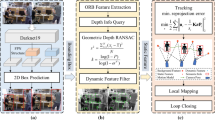Abstract
In the last decade, spatio-temporal database research focuses on the design of effective and efficient indexing structures in support of location-based queries such as predictive range queries and nearest neighbor queries. While a variety of indexing techniques have been proposed to accelerate the processing of updates and queries, not much attention has been paid to the updating protocol, which is another important factor affecting the system performance. In this paper, we propose a generic and adaptive updating protocol for moving object databases with less number of updates between objects and the database server, thereby reducing the overall workload of the system. In contrast to the approach adopted by most conventional moving object database systems where the exact locations and velocities last disclosed are used to predict their motions, we propose the concept of Spatio-temporal safe region to approximate possible future locations. Spatio-temporal safe regions provide larger space of tolerance for moving objects, freeing them from location and velocity updates as long as the errors remain predictable in the database. To answer predictive queries accurately, the server is allowed to probe the latest status of objects when their safe regions are inadequate in returning the exact query results. Spatio-temporal safe regions are calculated and optimized by the database server with two contradictory objectives: reducing update workload while guaranteeing query accuracy and efficiency. To achieve this, we propose a cost model that estimates the composition of active and passive updates based on historical motion records and query distribution. More system performance improvements can be obtained by cutting more updates from the clients, when the users of system are comfortable with incomplete but accuracy bounded query results. We have conducted extensive experiments to evaluate our proposal on a variety of popular indexing structures. The results confirm the viability, robustness, accuracy and efficiency of our proposed protocol.
Similar content being viewed by others
References
Brinkhoff T.: A framework for generating network-based moving objects. GeoInformatica 6(2), 153–180 (2002)
Chen S., Jensen C.S., Lin D.: A benchmark for evaluating moving object indexes. PVLDB 1(2), 1574–1585 (2008)
Chen, S., Ooi, B.C., Tan, K.-L., Nascimento, M.A.: St2b-tree: a self-tunable spatio-temporal b+-tree index for moving objects. In: Proceedings of SIGMOD, pp. 29–42 (2008)
Chen S., Ooi B.C., Zhang Z.: An adaptive updating protocol for reducing moving object databases workload. PVLDB 3(1), 735–746 (2010)
Gedik, B., Liu, L.: Mobieyes: distributed processing of continuously moving queries on moving objects in a mobile system. In: Proceedings of EDBT, pp. 67–87 (2004)
Hu, H., Xu, J., Lee, D.L.: A generic framework for monitoring continuous spatial queries over moving objects. In: Proceedings of SIGMOD, pp. 479–490 (2005)
Jensen, C.S., Lin, D., Ooi, B.C.: Query and update efficient B+-tree based indexing of moving objects. In: Proceedings of VLDB, pp. 768–779 (2004)
Lin, D., Jensen, C.S., Ooi, B.C., Saltenis, S.: Efficient indexing of the historical, present, and future positions of moving objects. In: Proceedings of MDM, pp. 59–66 (2005)
Mokbel, M.F., Xiong, X., Aref, W.G.: Sina: Scalable incremental processing of continuous queries in spatio-temporal databases. In: Proceedings of SIGMOD, pp. 623–634 (2004)
Mouratidis, K., Hadjieleftheriou, M., Papadias, D.: Conceptual partitioning: an efficient method for continuous nearest neighbor monitoring. In: Proceedings of SIGMOD, pp. 634–645 (2005)
Ng, V., Kameda, T.: The R-link tree: a recoverable index structure for spatial data. In: Proceedings of DEXA, pp. 163–172 (1994)
Rajagopalan S., Vazirani V.V.: Primal-dual rnc approximation algorithms for set cover and covering integer programs. SIAM J. Comput. 28(2), 525–540 (1998)
Saltenis, S., Jensen, C.S., Leutenegger, S.T., Lopez, M.A.: Indexing the positions of continuously moving objects. In: Proceedings of SIGMOD, pp. 331–342 (2000)
Srinivasan, V., Carey, M.J.: Performance of B-tree concurrency control algorithms. In: Proceedings of SIGMOD, pp. 416–425. ACM Press, New York, NY, USA (1991)
Tao, Y., Faloutsos, C., Papadias, D., Liu, B.: Prediction and indexing of moving objects with unknown motion patterns. In: Proceedings of SIGMOD, pp. 611–622 (2004)
Tao, Y., Papadias, D., Sun, J.: The TPR*-tree: an optimized spatio-temporal access method for predictive queries. In: Proceedings of VLDB, pp. 790–801 (2003)
Tao, Y., Papadias, D., Zhai, J., Li, Q.: Venn sampling: a novel prediction technique for moving objects. In: Proceedings of ICDE, pp. 680–691 (2005)
Wolfson O., Sistla A.P., Chamberlain S., Yesha Y.: Updating and querying databases that track mobile units. Distrib. Parallel Databases 7(3), 257–387 (1999)
Wu, W., Guo, W., Tan, K.-L.: Distributed processing of moving k-nearest-neighbor query on moving objects. In: Proceedings of ICDE, pp. 1116–1125 (2007)
Xiong, X., Mokbel, M.F., Aref, W.G.: Sea-cnn: scalable processing of continuous k-nearest neighbor queries in spatio-temporal databases. In: Proceedings of ICDE, pp. 643–654 (2005)
Xiong, X., Mokbel, M.F., Aref W.G.: Lugrid: update-tolerant grid-based indexing for moving objects. In: Proceedings of MDM, p. 13 (2006)
Yiu M.L., Tao Y., Mamoulis N.: The b dual-tree: indexing moving objects by space filling curves in the dual space. VLDB J. 17(3), 379–400 (2008)
Yu, X., Pu, K.Q., Koudas, N.: Monitoring k-nearest neighbor queries over moving objects. In: Proceedings of ICDE, pp. 631–642 (2005)
Zhang, M., Chen, S., Jensen, C.S., Ooi, B.C., Zhang, Z.: Effectively indexing uncertain moving objects for predictive queries. In: Proceedings of VLDB (2009)
Zhang, Z., Cheng, R., Papadias, D., Tung, A.K.H.: Minimizing communication cost for continuos skyline maintenance. In: Proceedings of SIGMOD (2009)
Zhang Z., Yang Y., Tung A.K.H., Papadias D.: Continuous k-means monitoring over moving objects. IEEE Trans. Knowl. Data Eng. 20(9), 1205–1216 (2008)
Author information
Authors and Affiliations
Corresponding author
Rights and permissions
About this article
Cite this article
Chen, S., Ooi, B.C. & Zhang, Z. An adaptive updating protocol for reducing moving object database workload. The VLDB Journal 21, 265–286 (2012). https://doi.org/10.1007/s00778-011-0257-3
Received:
Revised:
Accepted:
Published:
Issue Date:
DOI: https://doi.org/10.1007/s00778-011-0257-3




